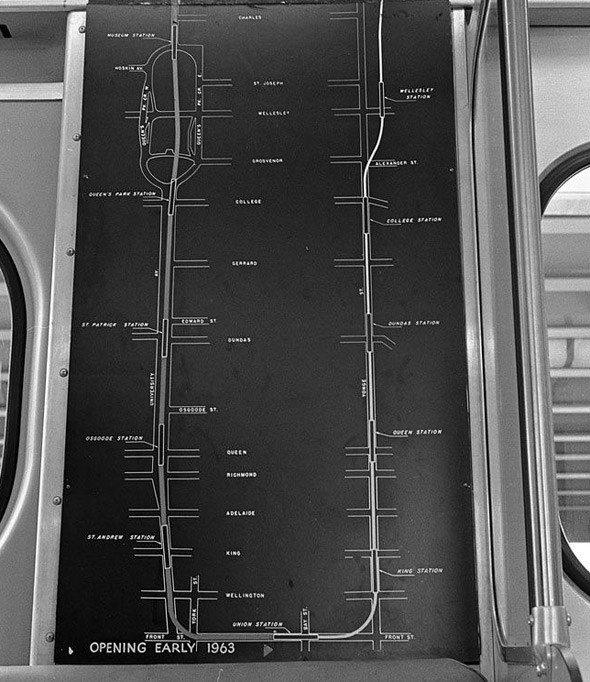44 North
Senior Member
Anything is possible, but one needs to know the ridership projection before entertaining a 'light' technology. We have been talking about DRL as justifying a heavy capacity line. I could see going to New York or Chicago style rail cars - shorter, but still heavy rail - as a way of addressing curvature.
If it turns out that all we need is light rail, then the case for a relief line changes. There might be appetite for an auto-excluded surface line on Queen, for instance, rather than tunnelling costing a couple billion or more across downtown.
I'm a big fan for LRT otherwise, but for DRL I would say, go heavy or go home.
- Paul
I think you and Metrolinx might be on the same page with regards to the type of subway vehicles, and that it's not guaranteed to see TTC subway rolling stock. For instance in the YRNS tech report the “Long Subway” they propose 8-car trains; for “Surface Subway” 7-car trains; and for “Short/U Subway” it’s 6-car trains. Although these trains may all end up creating a trainset of the same length, it could be the individual cars that are shorter (so as to address the unique curvatures of each individual route chosen).
I searched for capacity of SkyTrain adn am not sure if I fully believe everything I read.
http://www.greg-vassilakos.com/traindwg/lg_bombardier_innovia_300.gif
http://www.bombardier.com/en/transp.../transportation-systems/automated-metros.html
So what is believable.
Maybe 100 passengers per 12m long car (thats about 3 passengers per m2) x 8 cars per train = 800 passengers per train x 30 trains per hour (120 second headway) = 24,000 ppdpd (it also = 100m platforms).
With all door boarding at key busy and interchange stations, a headway of 100 seconds should be achievable which would give close to 30k.
Back to BurlOak’s and DVR’s points about vehicles/capacity (and apologies if this is a repost from my past trip to the reference library), but here are some numbers for individual modes/routes ID'd in that report. Sure they’re thirty years old, but considering Skytrain and light metro technology is still in existence, I think the info is still relevant. And I also think Mlinx is weighing the ideas of unconventional subway rolling stock or ART Light Metro-type technology in their YRNS.
So on p.46 onwards of the 1985 DRL report it gives us descriptions of the technology options. *Also note that on the top of p.46 in the first paragraph it says that the study used ICTS to provide the framework and geometric planning, but with limited changes subway technology could be adopted. And this info is +30 yrs old, and ATC and loading capabilities have probably advanced somewhat.
LRT
Vehicles and Wayside
24m vehicles operating singly or up to 4-cars
Op CharacteristicsMinimum headway of 120 seconds with capacity of 16,200 pph at Service Level E
*keep in mind that although it says it's for "exclusive right-of-way", it has at-grade crossings at local streets (not unlike YRNS' bs LRT idea)
*keep in mind that although it says it's for "exclusive right-of-way", it has at-grade crossings at local streets (not unlike YRNS' bs LRT idea)
Intermediate Capacity Transit System
Vehicles and Wayside
SubwayAdvanced light rail similar to 13m SRT vehicles, or 22m (slightly wider) GO ALRT - operating in trains of 2-6 cars
Op CharacteristicsOperate at min 90sec headways w/ capacity of 18,000pph using six Scarb RT cars, or min 120 sec headways w/ capacity of 30,600 using six of longer GO ALRT cars per train. Both Level of Service E.
Vehicles and Wayside
23m cars (similar to existing subway) operating as 4-6 vehicles
Operational CharacteristicsOperate at min headway of 128 seconds with line capacity of 34,000pph Level of Service E


